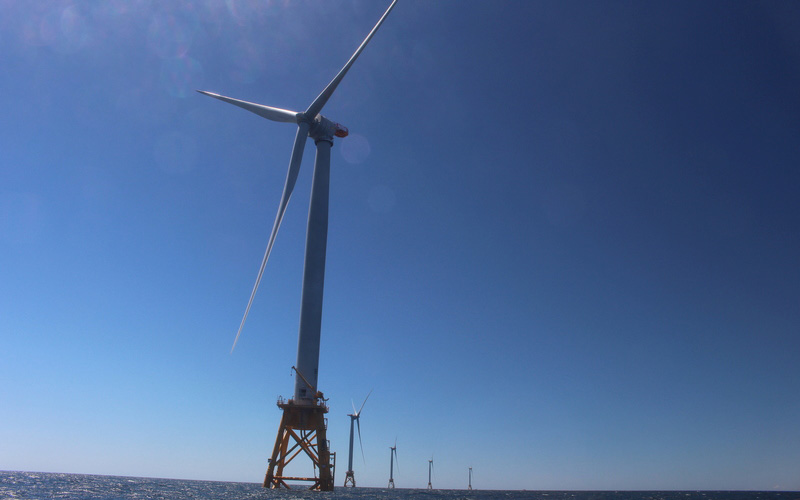
Plans for wind turbines are taking shape in the Gulf of Maine. Photo: Laurie O'Reilly
The Problem
If we hope to lower the temperature on an overheating planet, we need to replace polluting oil and gas with clean energy. One essential source is offshore wind. The Gulf of Maine has accessible ports and strong breezes to power wind turbines. It’s also an ecologically important area, crucial to the local economy and culture, and full of vulnerable marine life.
Building vital new clean energy infrastructure in our waters while minimizing the negative impact on the Gulf is a challenge – one that CLF is facing head-on.
CLF in Action
At every step of the way, CLF has pushed the Bureau of Ocean Energy Management to implement offshore wind in a way that delivers clean power while minimizing the impact on marine life and coastal communities. CLF and our members have spoken out at forums, organized a communications campaign, and advocated directly to federal agencies.
We’ve called on the Bureau to include better protections for ocean life, like the critically endangered North Atlantic right whale, iconic Atlantic cod, and irreplaceable cold-water corals that take thousands of years to grow and recover after a disturbance.
The Bureau must take steps to ensure that the Gulf of Maine’s legendary fishing grounds are protected and accessible to its coastal communities. It’s also vital that indigenous peoples’ traditional use and cultural values associated with the Gulf are safeguarded.
Progress
Our pressure has paid off. Many of our priorities were addressed when the Bureau of Ocean Energy Management’s released the designated “Wind Energy Area” for the Gulf of Maine’s offshore wind in March.
While the designated Wind Energy Area avoids most of the vulnerable habitat and wildlife areas we identified, we know that additional data and monitoring is needed before construction begins. The Gulf of Maine and coastal communities deserve stronger protections for right whales, more engagement with Indigenous tribes and fishermen to address their concerns, better baseline monitoring of the Gulf of Maine and analysis of the potential impacts of offshore wind, and a phased leasing approach that will allow the Gulf’s waters to be leased at a deliberate, sustainable pace.
Next Steps
BOEM has designated areas for offshore wind development, and in May, proposed that an offshore wind sale take place later this year for eight potential lease areas, but there is still much work to be done. As offshore wind development moves forward in the Gulf of Maine, CLF will continue to work hard to ensure this new industry is developed in a manner that is just, equitable, and environmentally sustainable. That’s why we will continue to pressure the Bureau to protect the Gulf’s priceless natural resources and the well-being of the coastal communities that will be affected by new turbines.
We all want to replace the polluting coal and natural gas plants – already on their way out – with clean renewable energy. We know we can build this infrastructure while protecting New England’s vital natural resources and way of life.
Offshore wind turbines in the Gulf of Maine could help make New England a leader in our equitable, clean energy future. CLF won’t quit fighting to make that a reality.



